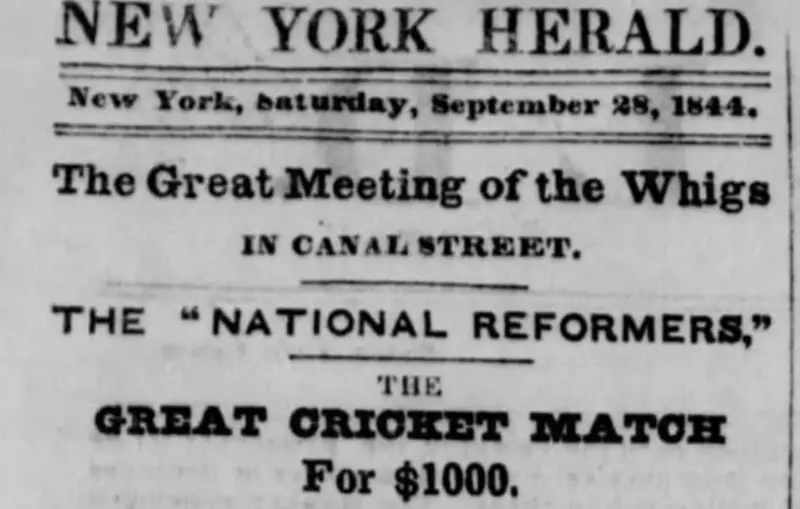Story of the First International Cricket Match
Cricket is an extremely popular sport today. It started back in the 16th century in South-East England, but with the expansion of the British Empire, the popularity of the sport grew internationally as well.
Now, in the 21st century, cricket is followed by millions of fans in the United Kingdom, Australia, New Zealand, the Indian subcontinent, southern Africa, and the West Indies, making it a worldwide sport. Cricket is now played in at least a third of the world’s countries, and we have numerous national and international cricket competitions.
So, a lot is happening in the world of cricket, and today’s cricket news is very different from what it was in the past, especially at the time of the first international cricket match. That first match happened way back in 1844, and it was played between the USA and the British Empire’s Canadian Province.
Cricket Match of 1844
The USA vs Canada in 1844 was the very first sports official international match, not only the first official cricket international match. The game was massive for the time, and it is thought that as many as 20,000 people watched it at the St George’s Cricket Club. The grounds of this club were located in what’s today the intersection of 30th Street and Broadway, not too far from the Empire State Building.
But how did this big match happen? International matches in cricket, or any other sport, were unheard of at the time. The idea for this particular match came spontaneously and from a simple hoax.
Hoax Leads to a Friendly Game
The story starts four years prior to the match when a cricket team from the newly founded St George Cricket Club got an invitation to play in Toronto. The Americans decided to accept the offer, so 18 of them started an arduous journey in a stagecoach.
When they reached Lake Ontario, they took a steamer to the other side. The whole journey took them a long time and they were very tired when they arrived at the Toronto Cricket Club, which still exists to this day.
What’s more, they became very discouraged when they were greeted by surprised Canadians who had no idea why the Americans came to their doors. Everyone was baffled, but it soon became clear that the “official” invitation was not really official as the Americans believed.
A certain Mr. George A. Philpotts who invited them claimed to be the Secretary of the Toronto Cricket Club, while in reality, there was no Mr. Philpotts in this position. It seems that no one thought about checking this imposter’s credentials before the journey took place.
Even though it all began as a hoax, both teams decided to play anyway. The match was quickly arranged, and once it began, many people came to watch, including the Governor of Upper Canada. The Americans won the game and decided to invite the Canadians back to New York for a rematch. That very rematch turned into the first international cricket match four years later.
International Game Begins
Both teams decided to pull players from other cricket clubs, so they ended up creating national teams. It is unclear if the teams that ended up playing in New York were truly national teams, but almost all pamphlets and advertisements for the game from the time named the match the USA vs. Canada cricket match.
So, the international game started on September 24 and ended on September 26, 1844. The Canadians ended the first day in the lead with 82 to 64, but the second-day game had to be rescheduled due to bad weather. The day after, the Canadians scored 63 runs, while the Americans scored 58, which ended the match in Canada’s favor. In essence, Canada won by a total of 23 runs when both innings were combined.
Something that began as a simple hoax ended up being a match the history books will remember for all eternity. What’s more, it is Mr. Philpotts, the imposter, who paved the way for one of the most important matches in the history of cricket. Was this his intention or did he merely want to play a terrible joke? We’ll never know.

Leave a Reply